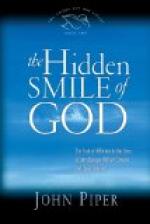Bunyan’s celebrity as a preacher, great before he was shut up in gaol, was naturally enhanced by the circumstance of his imprisonment. The barn in Josias Roughead’s orchard, where he was licensed as a preacher, was “so thronged the first time he appeared there to edify, that many were constrained to stay without; every one that was of his persuasion striving to partake of his instructions.” Wherever he ministered, sometimes, when troublous days returned, in woods, and in dells, and other hiding-places, the announcement that John Bunyan was to preach gathered a large and attentive auditory, hanging on his lips and drinking from them the word of life. His fame grew the more he was known and reached its climax when his work was nearest its end. His biographer Charles Doe tells us that just before his death, “when Mr. Bunyan preached in London, if there were but one day’s notice given, there would be more people come together than the meeting-house could hold. I have seen, by my computation, about twelve hundred at a morning lecture by seven o’clock on a working day, in the dark winter time. I also computed about three thousand that came to hear him one Lord’s Day in London, at a town’s-end meeting-house, so that half were fain to go back again for want of room, and then himself was fain at a back door to be pulled almost over people to get upstairs to his pulpit.” This “town’s-end meeting house” has been identified by some with a quaint straggling long building which once stood in Queen Street, Southwark, of which there is an engraving in Wilkinson’s “Londina Illustrata.” Doe’s account, however, probably points to another building, as the Zoar Street meeting-house was not opened for worship till about six months before Bunyan’s death, and then for Presbyterian service. Other places in London connected with his preaching are Pinners’ Hall in Old Broad Street, where, on one of his occasional visits, he delivered his striking sermon on “The Greatness of the Soul and the Unspeakableness of the Loss thereof,” first published in 1683; and Dr. Owen’s meeting-house in White’s Alley, Moorfields, which was the gathering-place for titled folk, city merchants, and other Nonconformists of position and degree. At earlier times, when the penal laws against Nonconformists were in vigorous exercise, Bunyan had to hold his meetings by stealth in private houses and other places where he might hope to escape the lynx-eyed informer. It was at one of these furtive meetings that his earliest biographer, the honest combmaker at the foot of London Bridge, Charles Doe, first heard him preach. His choice of an Old Testament text at first offended Doe, who had lately come into New Testament light and had had enough of the “historical and doing-for-favour of the Old Testament.” But as he went on he preached “so New Testament like” that his hearer’s prejudices vanished, and he could only “admire, weep for joy, and give the preacher his affections.”




